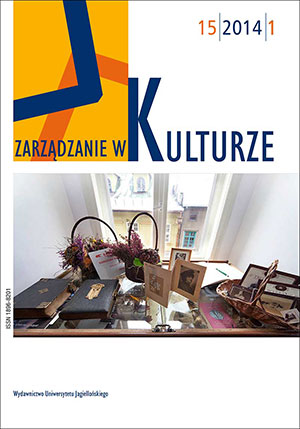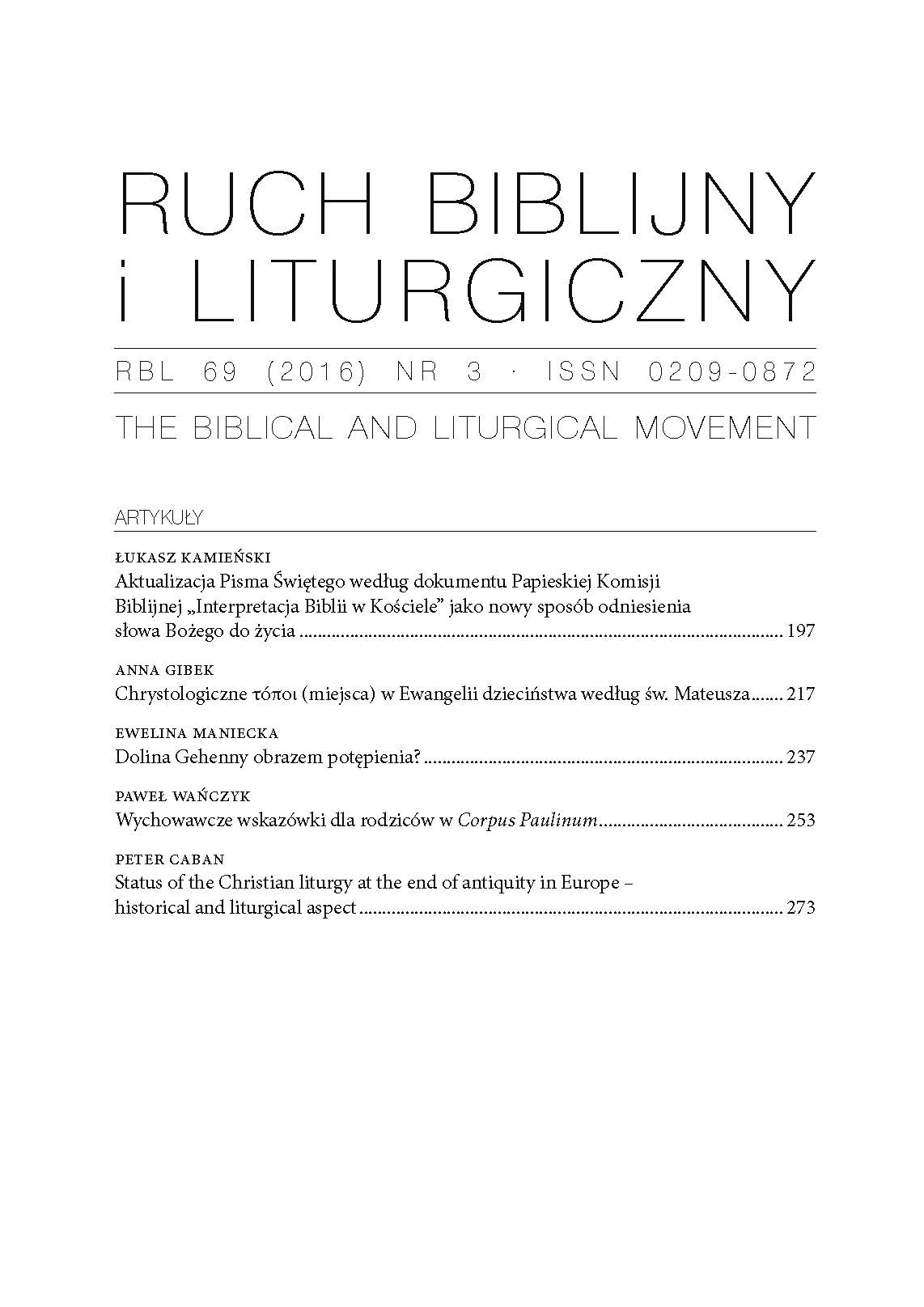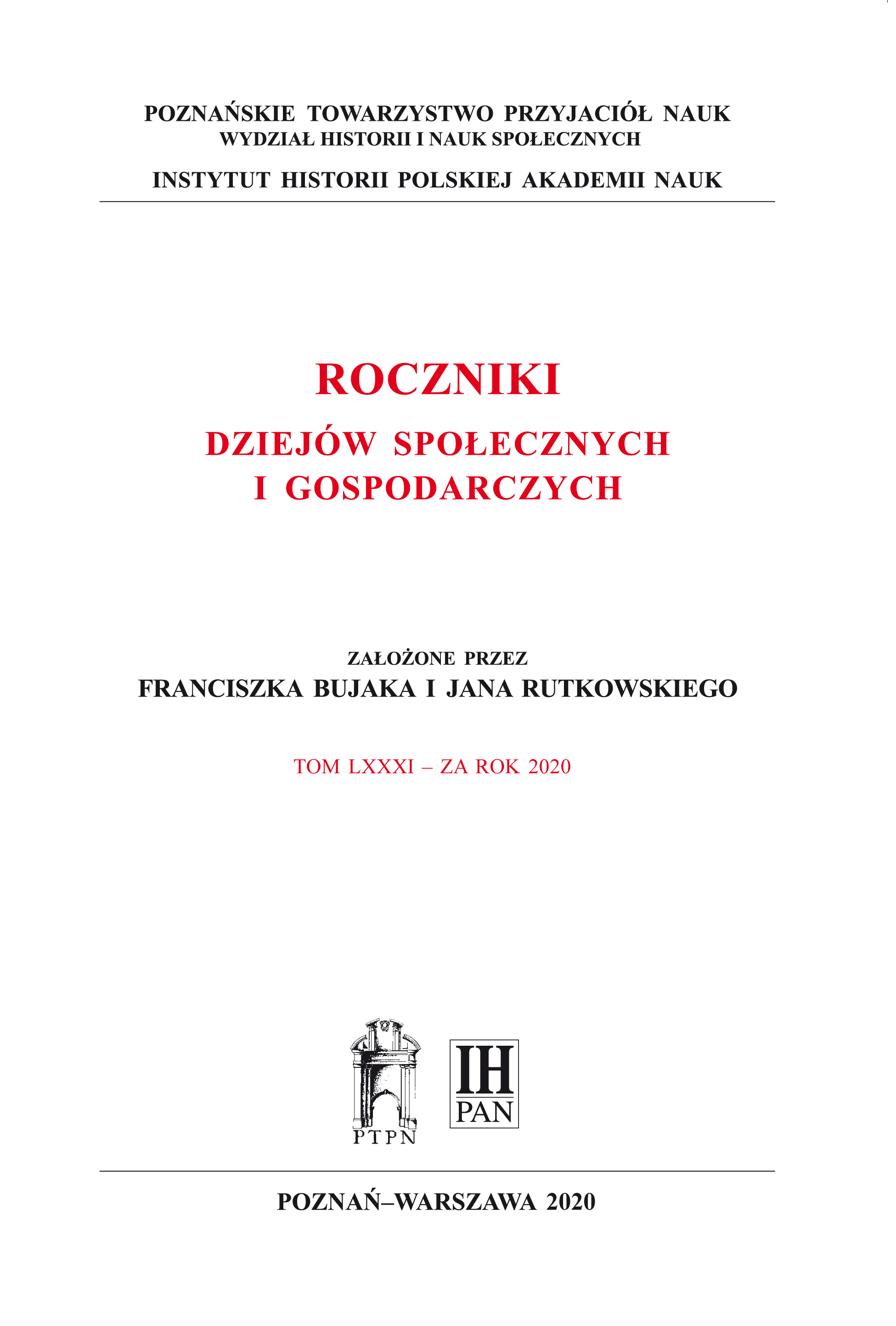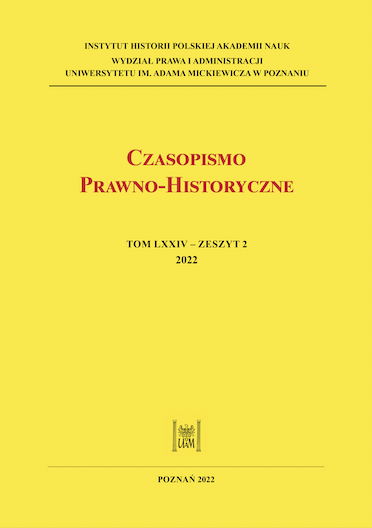
Thinking does not live here anymore
Myślenie już tu nie mieszka
Keywords: uniwersytet; uniwersity; Piotr Nowak; John C. Sommervill; Tadeusz Gadacz
More...
Keywords: uniwersytet; uniwersity; Piotr Nowak; John C. Sommervill; Tadeusz Gadacz
More...
A collection of memoirs by Ludwik Hurski published in the spring of 2014 is certainly worth using in didactic work. Thematic diversity of the issues addressed by the author makes the notes penned by a Silesian miner, who lived at the turn of the 19th and 20th centuries, useful both to Polish studies teachers as well as to historians. Juxtaposing Hurski’s "Memoirs" with the "Memoirs" by Jan Chryzostom Pasek might bring interesting results. Students in Silesian high schools are therefore given the opportunity do perfect their skills at comparative analyses as well as at using the sources. Moreover, the book makes students familiar with the linguistic variants that have already fallen into oblivion (e.g. winged words, sayings or legends concerning the region). However, the book can be read from yet another perspective — on the one hand, the text is a mixed language code, thus it is not freed from language errors, on the other — it testifies the author’s individual process of acquiring Polish national language by a Silesian whose childhood fell on the period of the "Kulturkampf".
More...
The article presents the genesis and the main trends within the Polish studies in the humanities conducted in Silesia on the turn of the 19th and 20th century with special emphasis on istoriography. The main focus is on the activity of Instytut Slaski (Silesian Institute) based in Katowice during the Interwar period and directly after the War. The author analyzes the political goals set by Michał Grazynski, the then Voivode, as well as the main directions of the scientific research carried out by this institution at that time. According to the intentions expressed by M. Grazynski, the Institute was meant to constitute – beside Muzeum Slaskie (Silesian Museum) and Komitet Wydawnictw Slaskich (Committee for Silesian Publications) of Krako´w – an element of the Polish political offensive in the field of historical politics. The five-year-long activity of the Silesian Institute before the War ended with an impressive number of 270 published books of various length and character. The popularizing activity in the form of lectures, meetings and special radio programs was also carried out. Directly after the War, there dominated another form of activity, which was connected with the primary political aim of bringing the Regained Territories closer to the society inhabiting them.
More...
Keywords: celebration; customs; cultural identity; tradition; contemporaneity; borderland regions; villages of Podhale and Beskid Śląski; the Carpathians
The ritualization of rural life present in contemporary reality that puts its signature on existential uncommonness favors pondering on the causality of practicing ceremonial celebrations in a form that corresponds to the tradition of olden days. Such ceremonies manifest the clash of the past and present time, with the latter modifying some sequences of the ceremony; nevertheless, the above-mentioned clash emphasizes the unchanging scenario of a cultural act with its preserved rituals, gestures, verbalized contents and – what may be seen in Podhale – folk dress. The cultivation of old contents and at times introduction of forgotten rituals is justified by tradition stimulated by a sense of identity (individual or collective) and to a lesser degree by institutionally steered tradition. It allows for placing the individual and the community in a mentally unchanged social-cultural space confirmed by ceremonies held (familial, annual). The presence of symbolic requisites, the behavior of the involved persons perceived by outside observers as a peculiar performance, are on the one hand a ceremonial implementation and a complement of a breakthrough event in the life of man, a religious act or a custom that is important for a given local group. On the other hand, however, their role is to: 1) maintain and strengthen the vanishing neighborly relations; 2) preserve the cultural continuity; 3) emphasize the regional individuality. The well-marked element of commercialization of regional identification as a signum temporis which is superimposed on the cultural and identity-associated dimension of ‘uncommon celebrations’ does not change the fact that such regional identification remains for a given community a basic and timeless evolving component of the cultural heritage.
More...


Wybitny pisarz polski pochodzenia żydowskiego Roman Brandstaetter we wspaniałej tetralogii Jezus z Nazarethu dał świadectwo swej wiary oraz kultury łączącej judaistyczne korzenie z doskonałą znajomością chrześcijaństwa, sztuki i cywilizacji europejskiej. Autorka przebadała zastosowaną w dziele symbolikę związaną ze światłem i ciemnością
More...
The figure of Cardinal Adam Stefan Sapieha, not without reason called the "Constant Prince", occupies one of the leading positions in the history of the Polish Church in the twentieth century. Although many works have already appeared on it, the story of this person is an inexhaustible subject to which - researchers are referring to readily. Therefore, when the hundredth anniversary of his episcopal consecration was approaching, the Department of History and Cultural Heritage of the Pontifical University of John Paul II proposed a device for a scientific session, to which the Jagiellonian University and the Polish Academy of Learning were very enthusiastic. The reviewed position is the result of a session that proves how much more secrets are hidden from historians by the person of the Archbishop and Cardinal of Cracow, of whom Pope John Paul II spoke with great esteem.
More...

Keywords: folk musical culture of Śląsk Cieszyński; folk music; Beskid Śląski
The present monograph is a reflection of the author’s interests which were pursued for many years, which eventually resulted in the research in the musical folklore of Śląsk Cieszyński (especially in places located in its southern part i.e. Beskid Śląski – Istebna, Jaworzynka, Koniaków). It constitutes a natural continuation of previous explorations devoted to the vocal folklore of the Polish minority in Zaolzie (the part of Śląsk Cieszyński which today is a part of the Czech Republic). The purpose of the dissertation was to separate the present phase of the evolution of folk musical repertoire of the aforementioned area in the folklore – folklorism – folk perspective. Therefore the author’s idea had to do with a monographical treatment of the song repertoire in the genre-related and horizontal perspective (a musicological perspective and also an analysis according to the function and the content) and the establishment of its peculiar properties by conducting a comparative analysis of the early material (songbooks which were published since the end of the 19th century), the Zaolzie material and the material that was collected during the field research conducted in the years 2011–2015 in the Trójwsie area (Istebna, Jaworzynka, Koniaków – individual and group interviews). Moreover, the publication features descriptions of the transformations of source folklore – the folk and hybrid material. The author could not disregard the historical and political perspective (hence a chapter devoted to history), which exerted a decisiveinfluence upon the development of the changes and transformations of folk culture (and ofother types of culture as well). The last chapter contains the results of research in the familiarity of the children and young people from the schools of Śląsk Cieszyński (sixth-grade elementary school pupils and third-grade gimnazjum pupils) with the folk repertoire, which complement the present state and the functioning of musical folklore in the area that was discussed. A further merit of the work consists in the fact that until now no monograph devoted to a similar theme was published.
More...
Keywords: bank management; business intelligence; financial condition of the bank
Purpose – Recognizing the impact of Business Intelligence (BI) implementation on the bank financial condition. Design/Methodology/approach – Author’s method based on a comparison of selected financial ratios calculated for the bank, which implemented the BI system and a group of banks without this software. Findings – A preliminary confirmation the hypothesis about the positive impact of the implementation of the BI system on the financial condition of the bank. Originality/value – The study fills identified cognitive gap on recognition of the impact business intelligence software implementation on the financial condition of the bank. The authors also presented the original method for comparing financial indicators reflecting the multi-dimensionality factors shaping these indicators.
More...

Keywords: Second Polish Republic; France; Upper Silesia; Artur Benis; Bank Śląski SA; Skarboferm
The text outlines the process of creation of Bank Śląski SA [Silesian Bank SA] in Katowice after World War I. The core of the article is the analysis of negotiations conducted between Artur Benis, and later Wacław Olszewicz, with French diplomats and bankers in 1920–1922. The author points out that previous interpretations of the talks mischaracter- ized the role of the Poles, who were in fact an important party influenc- ing the direction and outcomes of the negotiations concerning the economic future of Upper Silesia. The failure of the concept of a Polish-French bank in the territory annexed by Poland is explained by the wavering attitude of the French and the changes in economic situation taking place during the period of negotiations.
More...
Keywords: Polish photographers; University of Warsaw 200 aniversary; history of photography
The bilingual (Polish-English) and richly illustrated book is an attempt to show the references between the history of University of Warsaw and the development of photography – a crucial invention for the new visual civilization. The book covers the period from 1839, when the invention of daguerreotype was announced in France and when the first daguerreotypes were made in Poland, to 1921, when the situation of the University, reactivated during the World War I, was finally stabilized after the Polish-Soviet War. On the one hand the book presents the buildings of the University and the oldest photos of the people who created the history of the institution, on the other hand – it contains the reflection on the origins of photography in Warsaw and on the participation of the scientific milieu in its development. Which is worth noticing, at the beginning of the 1850s the scientists of the University of Warsaw already regarded photography as a useful research tool. The book is divided into two parts. The comprehensive essay illustrated with several dozens of figures is devoted to the origins of the photography and to its connection with the University of Warsaw. In the album more than 100 photographs (with the extensive commentaries) present the portraits of the professors and the students, the buildings and the important events related to the University. The publication is licensed under the Creative Commons Attribution-Share Alike 3.0 Poland license (CC BY 3.0 PL) (full license available at: http://creativecommons.org/licenses/by/3.0/pl/legalcode).
More...
Review
More...


Keywords: Silesian Voivodeship Office; autonomy of Silesian Voivodeship; Silesian Voivode; Second Polish Republic
The article discusses the role of the Silesian Voivode as the head of the Silesian Voivodeship Office in Katowice in the interwar period. The author showed the structure of the office and the principles of its work. In addition, she presented the issue of combining school and fiscal matters within the Silesian Voivodeship Office, which wasn’t the case in other voivodships and was resulted from the contemporary political, social and economic situation of the Upper Silesian part of the Voivodeship. The key aim was to defend the Polish raison d’etat in this region and to integrate the Silesian Voivodeship with the rest of Poland. This article has been prepared on the basis of archival sources, acts of universally applicable law, as well as on the literature on the subject, especially of the interwar period.
More...Keywords: electronic participation; e-voting
More...
Keywords: thinking; intellect; reason; good; evil; humanities; university
If, as Hannah Arendt stated in Eichmann in Jerusalem, evil is thoughtless, canthinking protect us from evil? In the first part of the article, I make a distinction betweenintellect (which follows the logic of thinking) and reason (which follows the ethics ofthinking). I put forward the thesis that if the ethics of thinking (reason) does not guidethe logic of thinking (intellect), it breeds evil and fanaticism. In the second part of thistext, I address causes of contemporary thoughtlessness, including mediocrity, pragmatism,measurability, and the dominance of the mercantile mentality. The final part of this essayemphasizes the responsibility of universities (especially in the area of the humanities)and, in broader perspective, of culture, for the education of reason.
More...